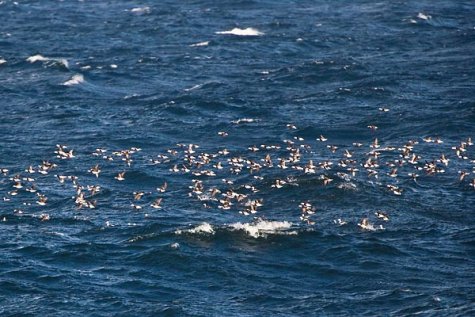Long-tailed duck flocks at sea
Photo: Arne Ader
Translation: Liis
Long-tailed ducks at sea
| Long-tailed duck |
Aul
|
The long-tailed ducks that have been breeding in the tundra areas are gathering for the winter in the Gulf of Finland and the Baltic. Already some flocks of a thousand birds have been spotted. Sadly the number of long-tailed ducks has fallen seriously during the last decade, largely due to oil pollution. Despite this it is the most numerous passing migrant.
The winter plumage should be noted. The male birds are easily recognisable by their long, slender, black tail feathers: no other waterfowl have anything similar to show off. The plumage is patterned in black and white, the top of the head is white and there is a dark patch on the cheeks and nape. The beak is two-coloured, the base dark, the tip light-coloured.
The beak of the young males of this summer resembles that of the adult birds but the plumage is similar to that of female birds.
They are small diving ducks. The female birds have a winter plumage that varies individually; the beak is dark and short. The area round the eye and the neck is bright, the cheek patch dark brown. The feathers on the back are brownish grey and on the breast greyish. Individuals with very light-coloured plumage occur.
It dives skilfully and when needed very deep (nearly 60 metres has been recorded). On the menu are molluscs, crustaceans and small fish.
At sea flocks of goldeneyes are numerous too; they will be presented in the next few days.









